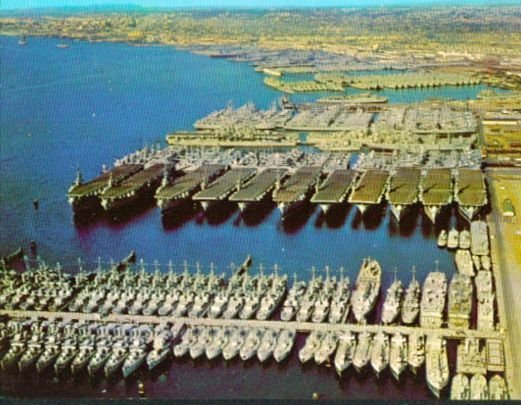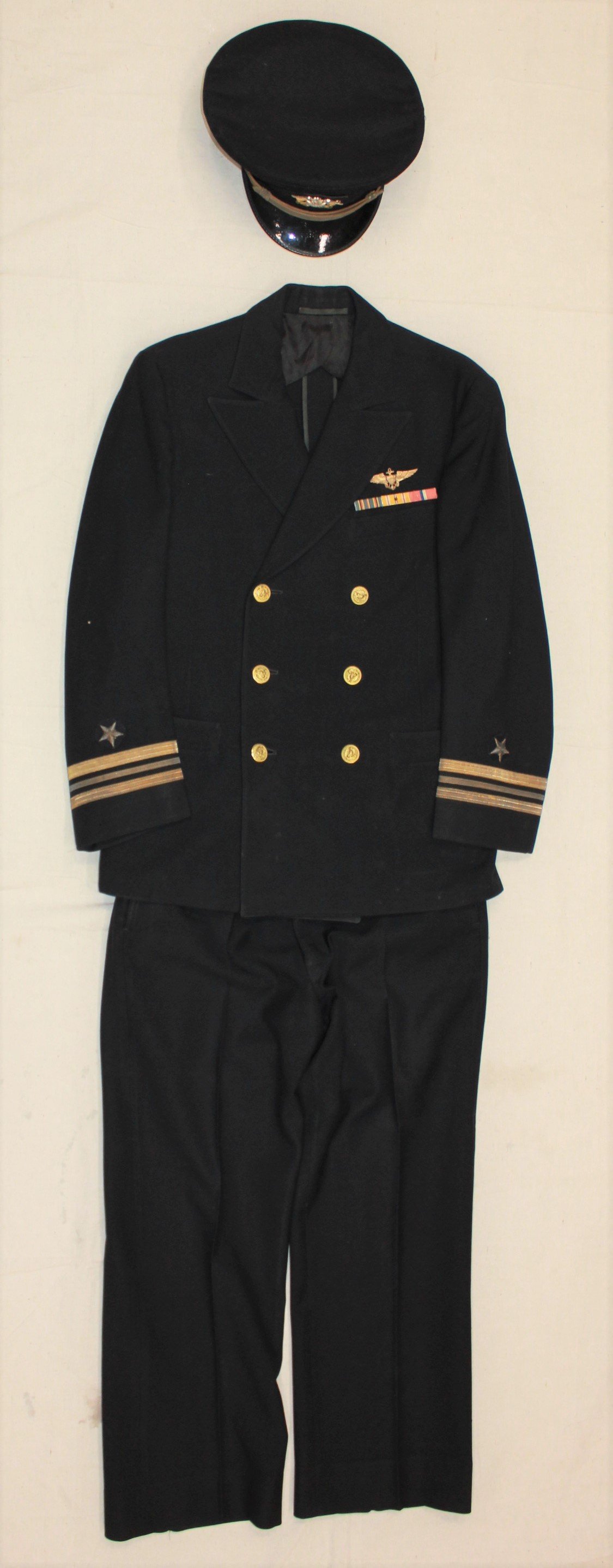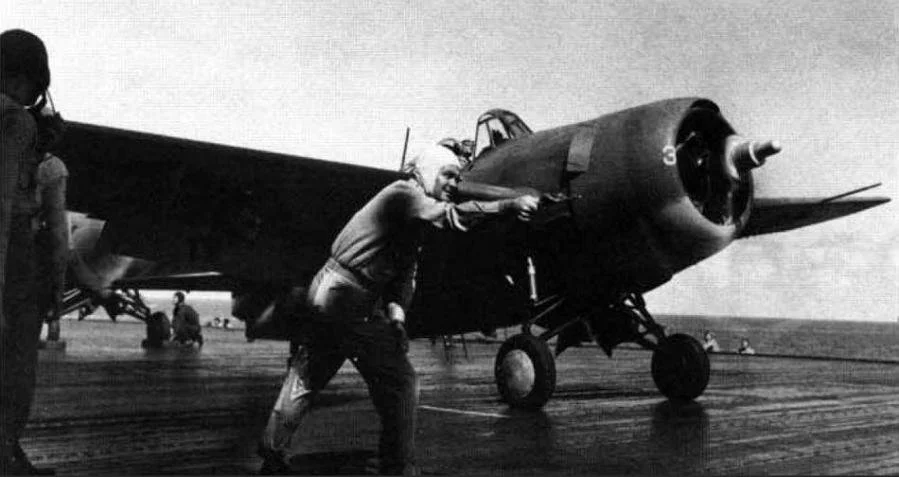U.S. Naval Air Uniforms of WWII
Navy WWII, Fleet Carriers, and Light Carriers:
The amount of volumes of books of information on this particular subject(s) is enormous, to say the least, no doubt. I will get a short, broken-down version of the story in here at some point in the future, And to think there were 3 in 1941. by 1945, there were some, 105 aircraft carriers of all types in Navy use by the end of World War II. Sixty-four of them were of the smaller escort carrier type aka “Babby Flat-Tops” and “Jeep Carriers”. The big “Fleet” / attack carriers had crews numbering from 1,000, and up to 3,500 men. Then most were tied up-indefinitely, and later scrapped or sold off.
PO-3, Naval Ordinance / Air Gunner:
The Ribbons Bar under his Airial-Gunner Battle-Wings (unofficial), he has the Purple Heart, Air Medal, Navy Presidential Unit Citation with a star, and Asiatic-Pacific Campaign Medal (with 2 stars).
When it comes to this uniform applying to a particular story or aircraft, that’s lost to time, but we can guess, though, the types of torpedo, and dive bombers (how had back-sea gunners) and U-Boot searching bombers, and seaplanes changed incredibly quickly, and while still in its infancy, many of the first variants being lost in the first confrontations with the enemy.
The “second batch” came in large numbers, and they were that much more modern and powerful; they soon evened the odds in the Pacific, and helped move massive amounts of munitions, machines, and men to the places they needed to be. It was an amazing turn of events. but the price had been high, and the Navy Sailors and Merchant Mariners from all over, the effort and price were enormous, eventually, the tide changed, but the amount of “Lost’ Ships and their supplies and people is enough to win a war itself, and in large the United States ability to mass produce war materials, and food, as well as personnel, as well and the Aircraft, and Tanks and Trucks to dish it out, even the ships to move it all, that changed what WWII could have become, the US did not want another war but learned, one always has to be prepared and be able to sustain itself.
If he had been there in 1942-43, he very well may have been assigned to fly a shotgun on one of the SBD Dive Bombers as seen in this set of wartime pictures. My Mom’s brother had been lost, with his aircraft, during the Guadalcanal battle; his name was “Tucker”.
“Seaman”, Aerial Gunner on a “PB4Y Bomber, Blue Jumper:
The B-24 turned out to be a pretty successful U-boat searching aircraft and helped to take the daylight advantage away from the German Submariners. A purpose-built long-range search aircraft soon developed, with a B-29-like tail, and blister turrets on the side that could shoot down, they began the end of the “Happy Times for the Germans, and a terror for the Japanese cargo ships, and anything that moved on the water. They had various sea mines and depth charges they could drop on the enemy vessels, and a lot of guns, and a lot of eyes on it.
PO-3, “Aircraft Maintenance Technician”, Veteran WW2:
His ribbons show he’s earned the American Campaign Medal, the Asiatic-Pacific Campaign Medal (with 2 stars), Navy Unit Commendation Medal.
PO-1st Class, Aircraft Maintenance Technician WW2:
His ribbons show he’s earned the Navy / Marne Corps Medal, Good Conduct, American Defense Service Medal, and Asiatic-Pacific Campaign Medal (with 2 stars).
CPO, Aircraft Metal/Fabricator, Dress Greens (#1):
CPO, Aircraft Metal/Fabricator, Dress Greens (#2):
CPO, Air / Traffic Control:
USN. CPO, Arial Electritian:
Navy Lieutenant, WW2, Khaki Dres:
U.S.N. Lieutenant J.G., Pilots / Gray Dress:
Pilot, Lieutenant Commander, Philippine Liberation:
Model 43 Mae West:
Mae-West 1945:
The Main Navy Fighters of WWII:
We start with the F-2-F Bruster Buffalo, sorta what we had at the star, but the F-4-F Wildcat, had already come into use, but proving pretty obsolete already, compared with our Enime’s of the time, then came the F-6-F this looked similar the F4F’s but it was a whole-other-animal, a huge improvement, and better than most of the enemy aircraft. The F-4-U Coursar had had teething problems landing on Aircraft Carriers, these were fixed by the Royal British Navy, with their Escort Carriers, use of the plane, developing the continuous turn approach, that worked, but many had been used as Naval and Marine grand base aircraft and became a terror to the Japanese, earning the name of “Wisteling Death”!
US Navy Bombers of WWII:
TBD Devastator, SBD Dauntless, SB2C Hell-Diver, TBF Avenger, and the PB4Y-2 Privateer.
The Navies Amphibious-Patrol Aircraft:
Retired Commercial Fisherman, Studies Military History, Military Uniform Collector.
















































































































































































































